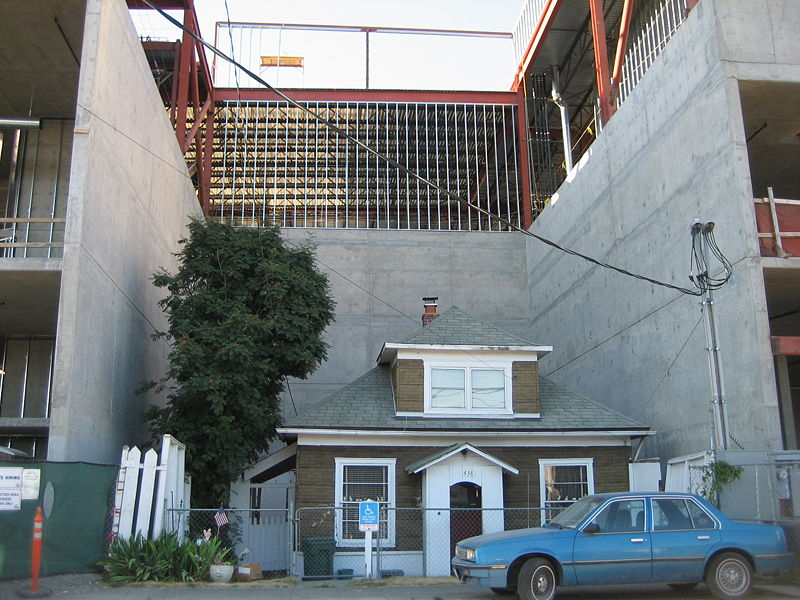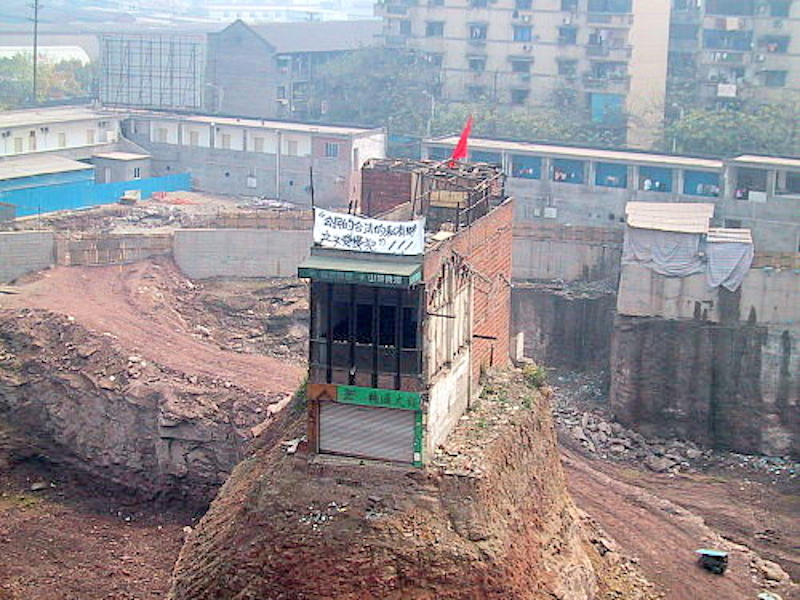n. A house that remains in place while a development project proceeds around it, particularly because the owner of the house stubbornly refuses to sell to developers.
2015
Sometimes, Chinese homeowners refuse to cash in, either because an offer is too low or for more principled reasons, and their property remains standing while the new project shoots up around it. Dingzihu, or "nail houses," as these won't-budge properties are called, have become symbols over the past several years of brave defiance of the powerful wealth that's driving new development.
2014
The vacant lot is directly across from Edith Macefield's house: a nail house that was formed by developers building the current Blocks at Ballard Complex around the house after Mrs. Macefield refused to sell.
2013
Sometimes developers or local governments compensate or relocate those they kick out, usually offering less than the original property's value. Sometimes they don't.
But occasionally this combo of force and pay-out doesn’t work. The result is what is popularly called "nail houses" or "nail households," referring both to their residents' stubbornness and how they protrude on the skyline of already razed land.
But occasionally this combo of force and pay-out doesn’t work. The result is what is popularly called "nail houses" or "nail households," referring both to their residents' stubbornness and how they protrude on the skyline of already razed land.
2006 (earliest)
This is the "nail house" in Chongqing, China — something that cannot be pulled out. The owner is Wu Jian, a local martial-arts champion. Vowing to protect his property, he unfurled a "Property Rights" banner on the roof of the house.
These buildings are called nail houses because, like a stubborn nail, they refused to be pulled out. The older term is holdout house, a phrase that dates to at least 1959.
 Edith Macefield's Seattle nail house. Source: Wikipedia.
Edith Macefield's Seattle nail house. Source: Wikipedia.
 A nail house in Chongqing, China. The banner reads, "Property rights!!!" Source: Wikipedia.
A nail house in Chongqing, China. The banner reads, "Property rights!!!" Source: Wikipedia.
 Edith Macefield's Seattle nail house. Source: Wikipedia.
Edith Macefield's Seattle nail house. Source: Wikipedia. A nail house in Chongqing, China. The banner reads, "Property rights!!!" Source: Wikipedia.
A nail house in Chongqing, China. The banner reads, "Property rights!!!" Source: Wikipedia.